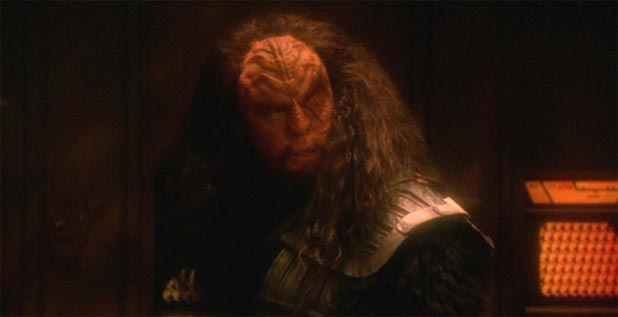"Avatar" Na'vi Language Will Out-Klingon Klingon Says James Cameron

In an interesting article written for the NY Times, columnist Ben Zimmer dives deep into SciFi constructed Languages and discusses the upcoming film "Avatar".
The new James Cameron flick features a fully constructed language for the blue skinned, feline like creatures featured in the film. Jimmy Cameron and his normal out-spoken ways even went so far as to say that the Na'vi language will out-klingon Klingon.
Cameron clearly had Klingon in mind when he began envisioning the linguistic landscape of “Avatar.” About three years ago, he hyped Frommer’s development of the Na’vi language by boasting to Entertainment Weekly that it would “out-Klingon Klingon.” Frommer now dismisses this as a bit of Cameronian hyperbole, assuring me that he has nothing but respect for Okrand’s masterwork. In fact, Frommer got the “Avatar” assignment in part on the strength of his work on “Looking at Languages,” an elementary linguistics workbook that includes a student exercise in deciphering Klingon word order. (Klingon follows the unusual object-verb-subject ordering.)
Also featured in the article is the father of the modern Klingon language Marc Orkrand.
Among discerning science-fiction movie fans, however, expectations are more sophisticated now when it comes to alien tongues, and for that we have the Berkeley-trained linguist Marc Okrand to thank. Okrand worked as a consultant on the “Star Trek” films, and his crowning glory is the development of Klingon, the most fully realized science-fiction language devised thus far. I asked Okrand recently about the legacy of Klingon, and he was modest about his accomplishments. He wasn’t the first academic linguist brought on board for such a project, he explained — that honor most likely goes to Victoria Fromkin, a U.C.L.A. professor who fashioned a language for the apelike Pakuni creatures on the 1970s children’s TV series “Land of the Lost.” Okrand also spoke admiringly of the prehistoric languages that Anthony Burgess created for the movie “Quest for Fire” in 1981.
But it was Okrand’s invention of Klingon, beginning with “Star Trek III” in 1984, that set the standard for cinematic xenolinguistics. Working from a handful of Klingon lines that James Doohan (the actor who played Scotty) came up with for the first “Star Trek” movie, Okrand concocted a rich, internally consistent language, with a dictionary that has sold more than 300,000 copies. In her entertaining new book, “In the Land of Invented Languages,” Arika Okrent details how the rise of Klingon has spawned a passionate subculture of fans versed in the language. Now the guttural sounds of Klingon can be heard in everything from a coming opera by the Klingon Terran Research Ensemble in the Netherlands to YouTube videos of the inimitable Klenginem, a Trekkie who performs Eminem’s rap songs in Klingon translation. (source New York Times)
Read the full article here
Image credit Trekcore.com

